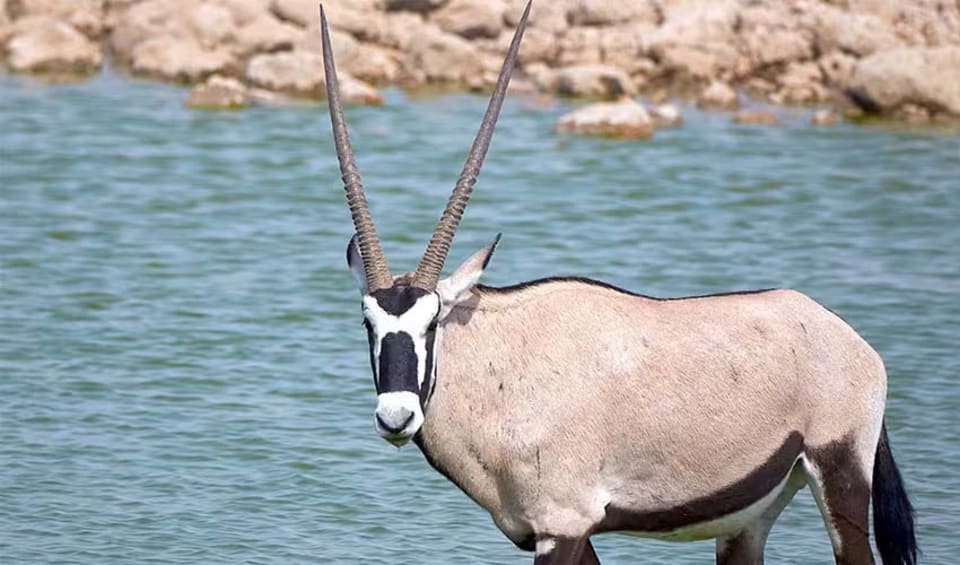Also known as the oryx, it is a striking antelope species native to the arid regions of Southern Africa, including the Kalahari Desert. Known for their impressive horns and unique markings, gemsboks symbolize the African wilderness, embodying beauty and resilience.
Gemsboks are well-adapted to the harsh, arid environments in which they live. Their sandy-colored coat helps them blend into the desert landscape, while the contrasting black and white facial markings and leg patterns add to their striking appearance. This coloration not only provides camouflage but also helps with thermoregulation, reflecting sunlight and minimizing heat absorption. Their large ears aid in dissipating heat, and their ability to raise the hairs on their back allows them to release excess body heat. Additionally, gemsboks can tolerate high body temperatures and have specialized kidneys that minimize water loss, enabling them to survive in areas with limited water sources.
One of the most fascinating aspects of gemsboks is their ability to obtain moisture from the food they eat, allowing them to go for long periods without drinking water. Their diet consists primarily of grasses, but they also consume a variety of other plants, including roots, bulbs, and tubers, which provide necessary moisture. During the dry season, they rely more heavily on these moisture-rich plants. Gemsboks have a remarkable ability to dig for roots and tubers using their hooves, showcasing their adaptability and resourcefulness.
Distribution
 Angola
Angola Botswana
Botswana Namibia
Namibia South Africa
South Africa Zimbabwe
ZimbabweAnything we've missed?
Help us improve this page by suggesting edits. Glory never dies!
Suggest an editGet to know me
Terrestrial / Aquatic
Altricial / Precocial
Polygamous / Monogamous
Dimorphic (size) / Monomorphic
Active: Diurnal / Nocturnal
Social behavior: Solitary / Pack / Herd
Diet: Carnivore / Herbivore / Omnivore / Piscivorous / Insectivore
Migratory: Yes / No
Domesticated: Yes / No
Dangerous: Yes / No




